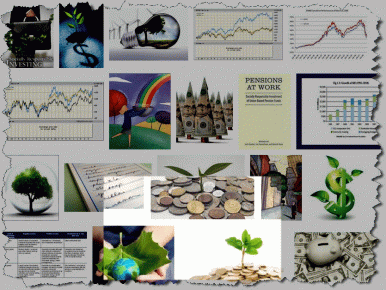With all the gloomy news about falling retail sales, declining house prices, and small business access to credit, the average person can be forgiven for thinking that “things are bad”. In times such as this, it is natural for a parent to worry about the world that their children will inherit, and the financial problems that they will face. This post is the start of a series of articles that will focus on financial planning for those with or planning to have, children.
My children will never afford a home!
As a financial planner, i get to see this worry play out in a wide range of actions. The more affluent will seek to buy a home “for the child/ren”, to ensure that they do not get locked out of the property market. After all, the average Perth established house price 20 years ago was around $130,000¹. Established house prices are currently somewhere around $469,000. In the face of price increases at that scale, how on earth can the babies of today afford a home when they eventually enter the workforce?
If home prices keep growing at this rate, in 20 years time it will cost $1,692,007. How on earth is my child going to save up $338,401 to be able to afford a 20% deposit?
We’ll never afford a good education!
Of course, it is not just homes. There is also the worry about schooling. Where private schools were once predominantly the pathway of the wealthier demographic, community attitudes have now moved to the point where private schooling is a common ambition for parents at a wide range of income levels. There is no such thing as an “average” private school costing, in much the same way as there is no such thing as an “average” Perth home. However, these fictional statistical figures are a way of at least putting forward estimates on which to base some hard maths calculations. We are fortunate in this one, as i once convinced a clever young mum to record all the costs involved in her son’s education into a simple exercise book. The boy was moving from a public primary school to a private school at Year 6. Here are the costs for his ensuing primary and secondary schooling. Keep in mind that this is a full accounting of uniforms, books, excursions (which become very expensive in late high school), sports and other activities.
- Year 6 – $15,297.65
- Year 7 – $9,434.15
- Year 8 – $15,850.80
- Year 9 – $16,371.00
- Year 10 – $24,885.65
- Year 11 – $20,114.95
- Year 12 – $19,817.25
Total high school costs amount to $91,131.20. There were only two years of primary school but let’s extrapolate and say that the primary school years cost $92,161.30. Total cost – $183,292.50. And that is the cost for only one child. What if you have 2 or 3 or 4?
By way of comparison, the current fee schedule for this school suggests total basic tuition costs of $180,230 for a full 12 year education. The future years tuition is likely to change year to year, so you can see how even the basic costs can add up. If we include the uniforms, books and other sundries then we are talking a massive investment into the education of a child. Even mild inflation added to the minimum extra costs is going to mean over $200,000 of after-tax money being spent.
Financial Planning for Generational Change
Once upon a time, money moved from parents to children to grandchildren. That paradigm is changing, as people live longer into retirement. By the statistical life expectancy age of around 83, children are likely to be in their late 40’s or 50’s. By this time, these children will have built (or failed to build) their own financial position. We are now seeing parents decide that their children are already established, and therefore gift their estates to grandchildren or even great-grandchildren. To some extent, it is the same logic as we’ve noted above – it’s the worry about how the current generation is going to be able to afford the same lifestyle as their parents, and their grandparents before them.
Generational change was once a “given”. Each generation hoped to create the conditions of a better lifestyle for their children – better hygiene, access to healthcare, abundant clean water and electricity, cheap and effective transport, and better career choices. It all seeemed so possible. The increasing affluence of “Western” populations saw developed country citizens demand more services, better wages, higher living standards, and great freedoms – and they pretty much received all of these. Housing seemed to be on a perpetual rise, and as a major repository of wealth for the bulk of citizens, this sparked greater expenditure on holidays, lifetyles, and billions of fluffy cushions.
We won’t go through the side-effects of all these demands – such as environmental degradation, cheap accutane 40 mg online increased income disparity, countries with unsustainable budget deficits, and sundry others, except to say that there was a cost to all this growth, and it is highly likely that the current generation is going to be paying that cost.
Children growing up today in the United States are likely to have a lower standard of living than their parents. Average incomes have failed to keep pace with inflation, and a large chunk of the high-paying middle class manufacturing jobs have moved overseas. The UK faces a bleak decade, at best, while the disparate quilt that is Europe has become the most talked about financial basket case over social dinner parties in nerdy homes the world over. However, things are different here in Australia.
Australia and complacency
To start with, our unemployment is incredibly low – and Western Australia could arguably be said to have reached full employment. Unfortunately, labour in the state is neither flexible enough nor skilled enough for the available pool to nicely fit the available spaces, and so we bring in labour from interstate and overseas. Even with this misalignment of resources, our employment is the envy of nations everywhere. Let’s try to remember that, when we worry about wage rises or costs of living or the future for our children.
Here’s a story about generational change in Europe – or better still, the failure of politicians and social commentators to successfully negotiate a smooth transition from one generation to another. This is an article from one of my favourite online newsletters, the German publication Spiegel International. It discusses the difficulty that Italy is having with weaning its baby boomer generation off welfare support so that money can be directed towards helping the current generation rebuild their world. In effect, the children of today are paying for the over-sized expectations of the previous generation.
http://www.spiegel.de/international/europe/0,1518,827797,00.html
Italy’s youth unemployment is woeful – and Spain’s is approaching 50%. These are dangerous disparities, and we can only hope that rebalancing these inequalities can be achieved without radical outcomes.
This is a story that Australians need to hear, and to think through very carefully. It’s not a long bow to suggest that our current economic stength is a complete and utter accident – a fortunate outcome of geography and history. With terms of trade at historically high levels, low unemployment, low interest rates (feel free to argue that one with me over a red wine one day) massive current and projected investment, an educated workforce, reasonable infrastructure, stable government and world-leading mineral, agricultural and even financial industries, Australia is magnificently positioned to forge its own future. Let’s hope that we can marshall the leadership that is required to convert all these strengths into positive benefits for our children. It doesn’t take long for bad decisions to make a big difference.
Not many people would be aware but tomorrow we achieve the 4th anniversary of the national gabfest known as the 2020 Summit. This should have been the starting point for an intelligent, comprehensive and far reaching belly-button ponder of our country, its resources, its people and their future. This is where i feel comfortable using the term “complacency”. Have a look at the website. It hasn’t even been updated to show that we have a new prime minister.
Another opportunity for change and improvement and growth, swallowed by disinterest, lack of leadership and an apathetic community approach to national outcomes.
Financial Planning – How do we best help our children?
As a father of five, this is something that i have pondered for many years – and i cannot say that i’ve reached a full conclusion. My love of my children, and the parental desire to see that they have the “best” upbringing is tempered with my knowledge of history, social change and the potential for unexpected outcomes. This post is the first of many that will cover just some of the financial issues in more detail. i hope you find them helpful or at least, vaguely interesting.
Further Reading
¹ I’ve used my own figures for estimates of Perth’s “average residential house price”. They are based on the Australian Bureau of Statistics figures, using a combination of the various series that can be combined to go back this far. Always keep in mind that “average” houses 20 years ago are not representative of “average” houses today. If we take the average home of 20 years ago, we would need to spend a lot of money to bring it to the equivalent of an average home today. We have to have some benchmark though, and this is mine.








2 comments for “Your children, and the world of money”